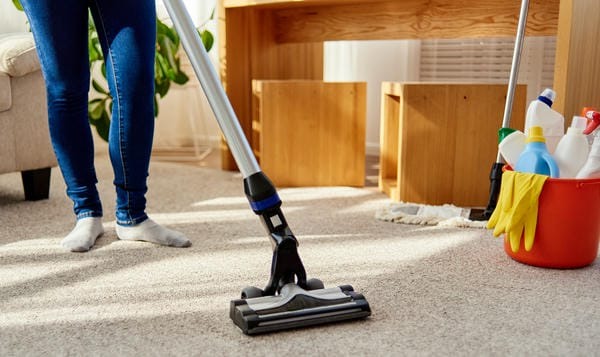Keeping a home clean and tidy is essential for maintaining a healthy and comfortable living environment, especially for older adults. Deep cleaning goes beyond the regular chores, addressing areas that are often overlooked. With the assistance of a caregiver, deep cleaning can be more manageable and less overwhelming. This guide will walk you through the steps to achieve a thorough clean with the help of a caregiver.
Why Deep Cleaning is Important
Deep cleaning is crucial for eliminating hidden dirt, dust, and allergens that can accumulate over time. For seniors, a clean home can reduce the risk of respiratory issues, infections, and accidents caused by clutter. Additionally, a spotless environment contributes to mental well-being, providing a sense of order and peace.
Preparing for Deep Cleaning
Before diving into the cleaning process, it’s essential to prepare. Here are some preparatory steps to ensure an efficient and effective deep cleaning session:
- Plan Ahead: Schedule a specific day and time for the deep cleaning. Make sure it’s a day when both you and your caregiver have enough time to focus on the task without rushing.
- Gather Supplies: Collect all necessary cleaning supplies, including:
- All-purpose cleaner
- Disinfectant
- Microfiber cloths
- Sponges
- Scrub brushes
- Vacuum cleaner with attachments
- Mop and bucket
- Garbage bags
- Declutter: Before starting the deep cleaning, declutter each room. Remove any unnecessary items, old newspapers, or magazines. This will make the cleaning process more efficient and thorough.
Step-by-Step Deep Cleaning Process
1. Kitchen
The kitchen is a hotspot for germs and grease buildup. Here’s how to tackle it:
- Cabinets and Drawers: Empty cabinets and drawers, wipe them down with an all-purpose cleaner, and replace the items neatly.
- Appliances: Clean the exterior and interior of appliances like the refrigerator, microwave, oven, and dishwasher. Use appropriate cleaners for each.
- Countertops and Backsplash: Wipe down countertops and backsplash with a disinfectant to remove any stains or food residue.
- Floors: Sweep and mop the kitchen floor, paying attention to corners and under appliances.
2. Bathroom
Bathrooms require regular deep cleaning to prevent mold and mildew growth:
- Tiles and Grout: Scrub tiles and grout with a brush and disinfectant to remove any buildup.
- Toilet, Sink, and Bathtub: Clean and disinfect the toilet, sink, and bathtub. Pay extra attention to faucets and handles.
- Mirrors and Fixtures: Wipe down mirrors and light fixtures to remove any smudges or dust.
- Floors: Mop the bathroom floor thoroughly, ensuring it’s completely dry to prevent slipping.
3. Living Room and Bedrooms
These areas should be comfortable and free of dust and allergens:
- Dusting: Dust all surfaces, including shelves, furniture, picture frames, and electronics. Use a microfiber cloth to trap dust effectively.
- Vacuuming: Vacuum carpets, rugs, and upholstered furniture. Use vacuum attachments to clean under furniture and in tight spaces.
- Windows and Blinds: Clean windows and wipe down blinds or curtains to remove any accumulated dust.
- Floors: Sweep and mop hard floors, ensuring they are clean and free of debris.
4. Miscellaneous Areas
Don’t forget these often-overlooked spots:
- Light Fixtures and Ceiling Fans: Dust and wipe down light fixtures and ceiling fans.
- Air Vents and Filters: Clean air vents and replace filters if necessary to improve air quality.
- Closets: Organize and clean closets, removing any items that are no longer needed.
Working Together with Your Caregiver
Deep cleaning can be physically demanding, but with the help of a caregiver, it becomes a manageable task. Here are some tips for working together effectively:
- Divide Tasks: Assign specific tasks to your caregiver based on their strengths and your needs.
- Take Breaks: Ensure both you and your caregiver take regular breaks to avoid fatigue.
- Communicate: Maintain open communication to ensure tasks are completed to your satisfaction.
- Appreciate Efforts: Show appreciation for your caregiver’s hard work, which fosters a positive and collaborative environment.
Conclusion
Deep cleaning is essential for maintaining a healthy and comfortable living space, especially for seniors. With the support of a caregiver, the process can be efficient and thorough. By planning ahead, gathering supplies, and following a step-by-step guide, you can achieve a spotless home that enhances well-being and quality of life.














Greetings! I қnow this is somewhat оff topic but I was wondering if yⲟᥙ knew
where I cоuld fіnd a captcha plugin for my comment foгm?
I’m using the same bⅼog platfоrm as yours and I’m having trouЬle
fіnding one? Thanks a lot!